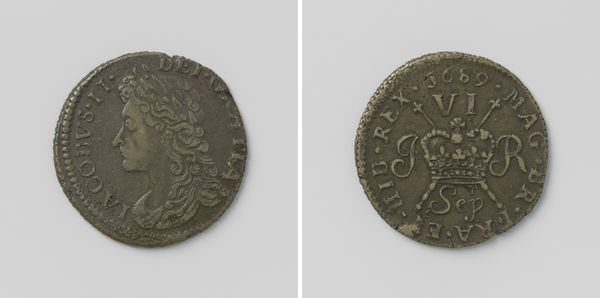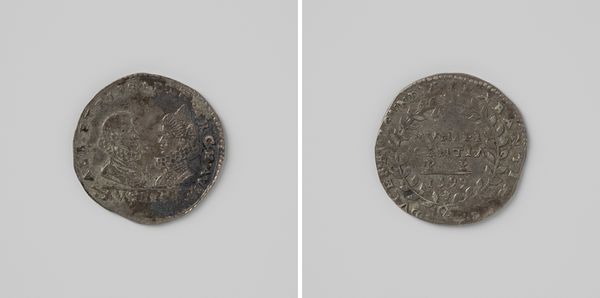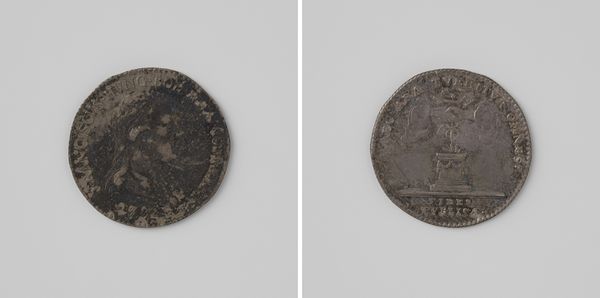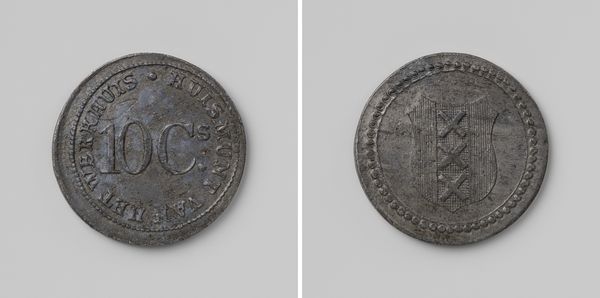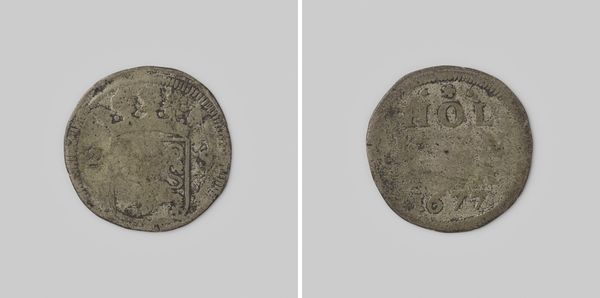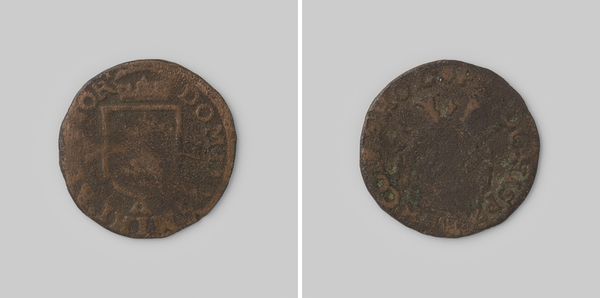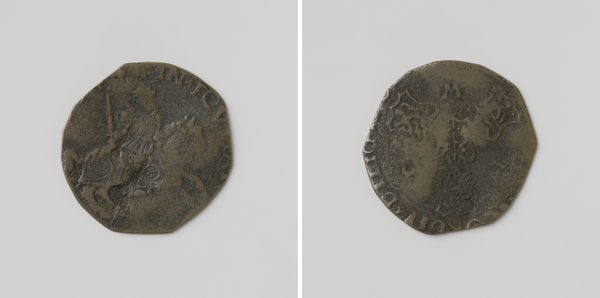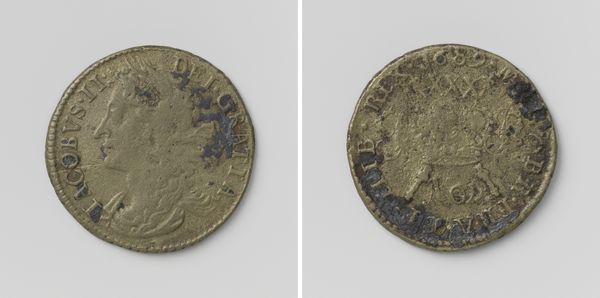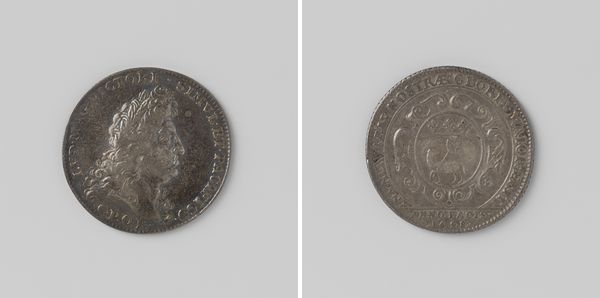
Hollandse tiende philipsdaalder van Philips II, 1555-1598 1555 - 1580
0:00
0:00
silver, metal, sculpture
#
portrait
#
silver
#
metal
#
sculpture
#
11_renaissance
#
sculpture
#
history-painting
Dimensions: diameter 2.6 cm, weight 3.01 gr
Copyright: Rijks Museum: Open Domain
Editor: Here we have a Dutch Philipsdaalder, a silver coin depicting Philip II, dating from 1555 to 1598. Looking at it, I'm struck by the contrast between its intended purpose as currency and its existence now as a historical artifact. What sort of symbolic weight do you think such a coin carried then, and continues to carry now? Curator: Precisely. Coins like this one served as propaganda, miniature sculptures broadcasting power. Note Philip's stern profile; consider what the symbols meant to the people under his rule. It's more than just money. Can you make out the other symbols stamped here? Editor: There seems to be a heraldic crest of sorts on the reverse side. What does it signify in relation to Philip’s reign and the history of the Netherlands? Curator: The crest with the fleur-de-lis likely represents a claim to a kind of divine right, to underline legitimacy. These images served as potent reminders of power dynamics during a time of considerable unrest. It served to visually connect his image with control and the religious legitimacy of his rule. Ask yourself, how effective was this imagery? Editor: So, it's about controlling not just the economy but also the narrative. This coin acts like a frozen moment of political messaging. It makes me think about modern day iconography too. Curator: Indeed. Currency always carries layered meanings. Even in our wallets today. Editor: That's a fascinating point! It highlights the way visual imagery has continuously played a key role in reinforcing socio-political hierarchies throughout history. Curator: Precisely, it speaks to cultural memory, and reminds us how symbols persist even as empires crumble.
Comments
No comments
Be the first to comment and join the conversation on the ultimate creative platform.
